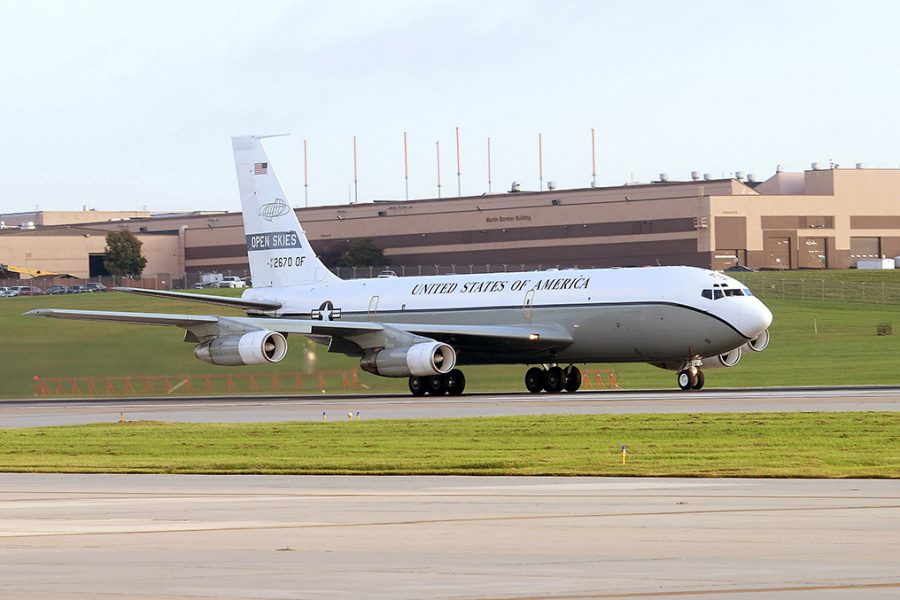The OC-135 is a modified WC-135B used for arms control treaty observation and imagery collection over nations party to the 1992 Open Skies Treaty.
Specialized mission equipment includes side-looking synthetic aperture radar, infrared line scanning devices, video camera, and framing and panoramic optical cameras installed in the rear of the aircraft.

The two oblique KS-87E framing cameras permit photography from approximately 3,000-ft altitude, and one KA-91C panoramic allows for wide sweep photography from approximately 35,000 ft.
Ongoing efforts include installing digital camera suite on the remaining aircraft and replacing obsolete and difficult to maintain wet-film cameras.
The U.S. State Department declared Russia in violation of the Open Skies Treaty for preventing access to Kaliningrad and the border with Georgia, resulting in no USAF sorties in 2018.
After resuming flights in 2019, the U.S. withdrew from the treaty Nov. 22, 2020, citing continued Russian breaches. USAF canceled efforts to replace the fleet with more modern aircraft by 2022, pending direction on whether the U.S. will re-enter the treaty.
Contractor: Boeing.
First Flight: 1993.
Delivered: 1993-1996.
IOC: October 1993.
Production: Three.
Inventory: Two.
Operator: ACC.
Aircraft Location: Offutt AFB, Neb.
Active Variant: •OC-135B. Modified C-135 equipped for photo reconnaissance/treaty verification.
Dimensions: Span 131 ft, length 135 ft, height 42 ft.
Weight: Max T-O 297,000 lb.
Power Plant: Four Pratt & Whitney TF33-P-5 turbofans, each 16,050 lb thrust.
Performance: Speed 500+ mph, range 3,900 miles.
Ceiling: 50,000 ft.
Accommodation: Three pilots, two navigators, three sensor maintenance technicians; Defense Threat Reduction Agency mission crew: mission commander, deputy, four sensor operator/translators, flight follower; total seating: 35, incl space for foreign country representatives.
